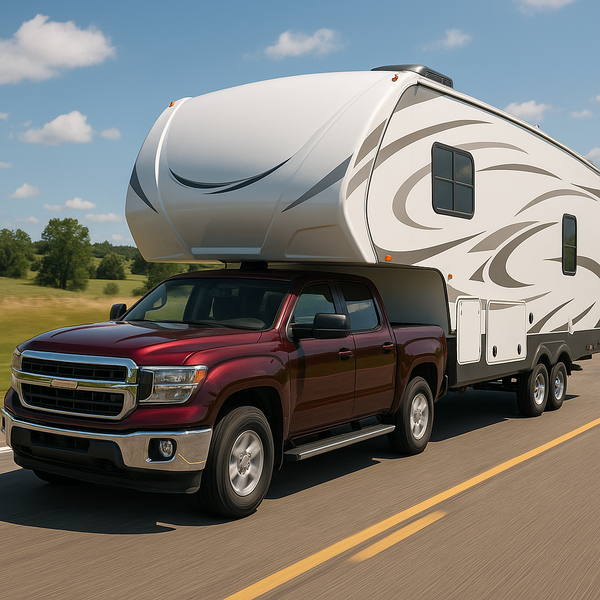
Towing a recreational vehicle opens up incredible travel opportunities, but it also comes with significant responsibilities regarding safety. Understanding the proper techniques and necessary equipment is paramount before hitting the road. Ensuring a safe towing experience protects not only you and your passengers but also others on the highway.
Understanding Your Weights and Limits
Before you even hitch up your RV, it's crucial to know the weight capacities of both your tow vehicle and the RV itself. This involves understanding terms like Gross Vehicle Weight Rating (GVWR), which is the maximum permissible weight of the vehicle or trailer when fully loaded. You also need to consider the Gross Combined Weight Rating (GCWR), which is the maximum allowable weight of the loaded tow vehicle and the loaded trailer combined. Exceeding these limits can lead to serious safety issues, including decreased braking ability, reduced steering control, and excessive wear on your vehicle's components. Check your vehicle and RV owner's manuals for these critical numbers.
Tongue weight, also known as hitch weight, is another vital factor. This is the downward force exerted on the hitch ball by the trailer coupler. Proper tongue weight is essential for stable towing; too little can cause trailer sway, while too much can overload the rear of the tow vehicle. Generally, tongue weight should be between 10-15% of the loaded trailer's weight for conventional trailers. Use a tongue weight scale to measure this accurately and adjust your cargo distribution in the RV accordingly.
Selecting the Right Hitch and Equipment
Choosing the correct hitch system is fundamental to safe RV towing. The hitch class must match the weight requirements of your trailer. For larger RVs, a weight distribution hitch is often recommended or even required. This system uses spring bars to distribute a portion of the tongue weight to the front axle of the tow vehicle and the axles of the trailer, promoting a more level ride and improved handling and braking.
Sway control devices are also highly beneficial, especially for longer or heavier trailers. These devices help to minimize side-to-side movement (sway) caused by wind, passing vehicles, or uneven roads. They can be integrated into a weight distribution hitch or added as a separate component. Ensuring your hitch is properly installed and rated for your specific towing needs is non-negotiable.
Pre-Trip Inspection Checklist
A thorough inspection before each trip is perhaps the most critical step in ensuring safe RV towing. This checklist should cover both the tow vehicle and the RV.
Start with your tires. Check the tire pressure on both the tow vehicle and the RV, including spares. Ensure they are inflated to the manufacturer's recommended pressure for towing (often found on a sticker in the doorjamb or owner's manual). Inspect tires for wear, cracks, or bulges.
Verify that all lights are working correctly: headlights, taillights, brake lights, turn signals, and hazard lights on both units. Proper signaling is crucial for highway safety. Check the electrical connection between the vehicle and RV for any damage or corrosion.
Test your brakes, including the trailer brakes if your RV is equipped with them. Ensure the brake controller in your tow vehicle is properly adjusted. Check the brake fluid level in your vehicle.
Inspect the hitch connection itself. Ensure the coupler is securely latched onto the hitch ball and that the safety pins or clips are in place. Connect safety chains or cables, ensuring they are crossed underneath the coupler to cradle the tongue if it were to detach. Connect the breakaway cable, which will activate the trailer brakes if it separates from the tow vehicle.
Check fluid levels in your tow vehicle (engine oil, transmission fluid, coolant, power steering fluid). Inspect belts and hoses for wear.
Safe Driving Practices While Towing
Towing an RV significantly changes how your vehicle handles, accelerates, and brakes. Adopt defensive driving practices. Maintain a greater following distance than you normally would to allow for increased stopping distance.
Drive at a reduced speed, especially in adverse weather conditions, on winding roads, or during heavy traffic. Higher speeds increase the risk of sway and reduce reaction time. Be mindful of bridge heights and road construction zones.
Make wider turns to account for the length of the RV. Pay extra attention to clearance when maneuvering in tight spaces, gas stations, or campgrounds.
When descending grades, use a lower gear to allow engine braking to help control your speed, rather than solely relying on your service brakes, which can overheat. When ascending grades, your vehicle will work harder; monitor engine temperature.
Backing Up an RV
Backing up an RV requires practice and patience. It's often counterintuitive: to make the trailer go left, you turn the steering wheel right, and vice versa. Make small steering corrections. It's highly recommended to have a spotter outside the vehicle to help guide you, especially in unfamiliar areas. Agree on hand signals beforehand. If you don't have a spotter, get out and look (GOAL) frequently to assess your surroundings and planned path.
Regular Maintenance is Key
Safe towing also depends on maintaining both your tow vehicle and RV in good condition. Follow the manufacturer's recommended maintenance schedules for both vehicles, paying close attention to brakes, tires, suspension, and transmission fluids. Address any unusual noises or handling issues promptly. Regular inspections and timely repairs can prevent problems before they become dangerous on the road.
Towing an RV safely requires preparation, the right equipment, careful inspection, and adjusted driving techniques. By taking the time to understand your setup, perform thorough checks, and practice safe driving habits, you can significantly reduce risks and enjoy your adventures on the open road with confidence.

